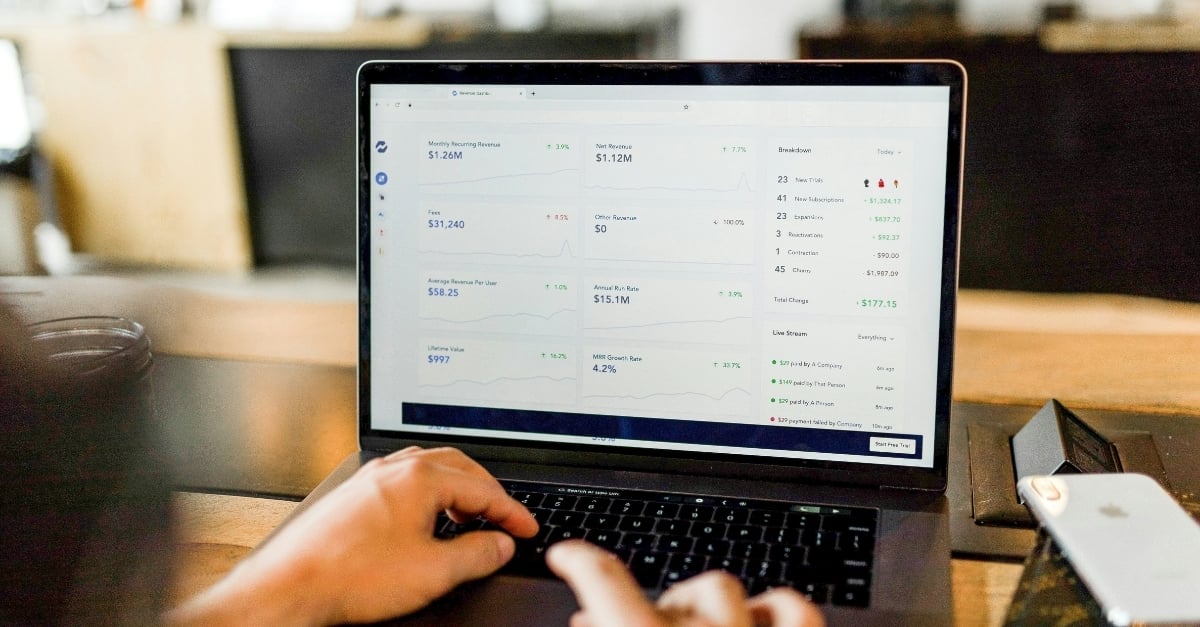6 min read
Redshift vs BigQuery: Comparing Data Warehouses
Managing large-scale data is crucial for businesses today, especially as data becomes more complex and abundant. Data warehouses play a pivotal role...
4 min read
![]() Promevo
|
May 28, 2024
Promevo
|
May 28, 2024
If you’re deciding between business intelligence (BI) platforms, you’re likely considering Looker, Power BI, or Tableau. Each has its strengths: Looker for its data modeling and Google Cloud integration, Power BI for its Microsoft product integration and user friendliness, and Tableau for its advanced data visualization and dashboards.
Choosing the right BI tool is vital for data-driven insights and avoiding inefficiencies and added costs. This guide will compare Looker, Power BI, and Tableau, focusing on features, use cases, and value to help you make the right choice for your specific business needs.
Looker is a BI platform that specializes in data modeling and governance — both of which are critical for constructing intricate data systems. Its features aid you in the development of consistent metric definitions and data governance across your organization, and it is often the first choice for many Google-integrated businesses looking for the ideal BI tool.
Looker excels when businesses face issues with scattered datasets, unclear data locations, and the need for a single source of truth to drive data-driven decisions. It is particularly adept at transforming raw data into a structured, analysis-ready format, using the modeling language LookML for complex querying and reporting needs. Despite the similarity in name, you shouldn’t confuse Looker with Looker Studio (and Looker Studio Pro).
Looker Studio, formerly known as Google Data Studio, is a tool that prioritizes data visualization and reporting. It allows you to create interactive dashboards that are visually appealing and can easily connect to various data sources.
Looker Studio is designed to be user-friendly and perfect for quick report generation and data sharing among teams or with the public. The platform supports real-time collaboration and can integrate reports into web pages, making it a versatile tool for sharing insights.
You get the best of both worlds when you combine Looker and Looker Studio: Looker for depth in data modeling and governance, and Looker Studio for breadth in connectivity and visualization. Together, you can leverage your organization's data analytics and reporting, with Looker serving as the backbone for robust data architecture and Looker Studio acting as the interface for accessible and interactive data representation.
You can learn more about the nuances between Looker, Studio, and Looker ML on Google’s Cloud documentation page here.
Power BI is a suite of business analytics tools designed for data visualization and business intelligence. Its features include the ability to connect to various data sources, transform and model data, create visual reports, and share insights across an organization.
The integration with other Microsoft products, such as Azure and Office 365, is its main selling point for users already within the Microsoft ecosystem. It also provides a set of tools for data analysis, including AI capabilities, and has a strong community and support network. The desktop version, Power BI Desktop, is available for free, so you can start using the service without initial investment.
Similar to Looker, Power BI is great at tearing down data silos. Power BI can integrate diverse data into a single platform, allowing for unified data modeling, analysis, and visualization.
The only issue you might run into is if your needs are more than basic: you’ll need to graduate from the lower-cost plans that, in turn, make the other BI platforms start to sound like a better deal. And if you’re not already deeply embedded in the Microsoft ecosystem, you might be better off with Looker or Tableau.
Tableau is a bit different from the other two — it is primarily a visual analytics platform. This can be a good thing, since its user-centric approach makes it a tool that can be used by individuals across various roles, from analysts and data scientists to students, teachers, executives, and business users. Thanks to its simple interface, you can connect to data and start analyzing by dragging and dropping components to create visualizations.
Tableau offers a range of products including Tableau Desktop, Tableau Server, and Tableau Cloud, which cover a spectrum of data tasks from preparation to analysis, governance, and collaboration. It integrates with a variety of data sources and has features that support advanced analytics such as machine learning and natural language processing.
Tableau’s strong suit is creating interactive and shareable dashboards, performing ad-hoc analyses, and augmenting human creativity in analysis with AI-driven insights.
One thing to keep in mind however, Tableau does not offer the same level of data modeling sophistication as Looker's LookML, potentially making it less suitable for organizations that need a unified modeling layer to maintain data definitions and business logic.
Your decision should be influenced by the size of your organization, the complexity of your data, your team's technical expertise, and how you plan to leverage the insights derived from your data. Break it down into the following steps to make the process easier:
If your organization is heavily invested in the Microsoft environment, Power BI may offer the best integration, leveraging existing infrastructure and tools like Azure and Office 365.
If you’re deeply rooted in the Google Cloud Platform or require advanced big data capabilities, Looker's native integration and powerful data modeling with LookML is likely to be the best choice.
If your organization has complex data operations that require rigorous data governance and a standardized approach, Looker’s data modeling capabilities make it an attractive option.
On the other hand, if your primary need is to create interactive and visual reports without complex data modeling, Tableau should be considered for its visualization features.
Looker's more technical approach, which leverages LookML for data modeling, might require a team with strong coding skills, whereas Power BI’s user-friendly interface and Tableau's intuitive drag-and-drop functionalities cater to users with varying levels of technical expertise.
Consider the total cost of ownership, including licenses, training, and infrastructure needs. Power BI often seems like a cost-effective option for small to mid-sized businesses, while Looker and Tableau can represent a higher investment but offer advanced features that may justify the cost for larger enterprises or those with specific needs.
If your goal is to embed analytics into customer-facing applications or to standardize business metrics across a large organization, Looker’s capabilities are your best bet.
Looker's integration into the Google Cloud ecosystem provides advanced capabilities for handling big data scenarios, a significant advantage for companies that require extensive data processing and analytics at scale.
While Power BI is well-suited for quick insights and has a strong affinity with other Microsoft products, it won’t provide the same level of detail in data modeling or the same depth of integration capabilities that Looker offers.
Compared to Tableau, Looker provides a more comprehensive approach to data management. While Tableau allows for the creation of compelling data visualizations and is intuitive for end-users, it lacks a unified, code-centric environment for managing data models as Looker does.
This makes Looker a better choice for organizations looking to maintain strict data governance and ensure that all users are drawing insights from the same set of data definitions. Additionally, Looker's integration with Google Cloud's BigQuery can lead to even more efficient handling of large datasets, and provide a more powerful analytics experience.
Promevo is a Google Cloud expert for a reason: Google is often the ideal solution for many organizations, and their massive suite of tools and data capabilities give its BI tools — in this case, Looker — a significant edge.
Contact us today to learn more about leveraging Looker as your BI platform of choice to gain in-depth insights into your data and take the next step towards data-driven growth.
Meet the Author
Promevo is a Google Premier Partner for Google Workspace, Google Cloud, and Google Chrome, specializing in helping businesses harness the power of Google and the opportunities of AI. From technical support and implementation to expert consulting and custom solutions like gPanel, we empower organizations to optimize operations and accelerate growth in the AI era.

6 min read
Managing large-scale data is crucial for businesses today, especially as data becomes more complex and abundant. Data warehouses play a pivotal role...

5 min read
Power BI may be familiar. But it’s not always flexible. You might be hitting limits around cross-cloud reporting, sharing data across teams, or...

5 min read
Are you torn between choosing Google's BigQuery or Snowflake for your data warehousing needs? It's a common dilemma. BigQuery offers deep...